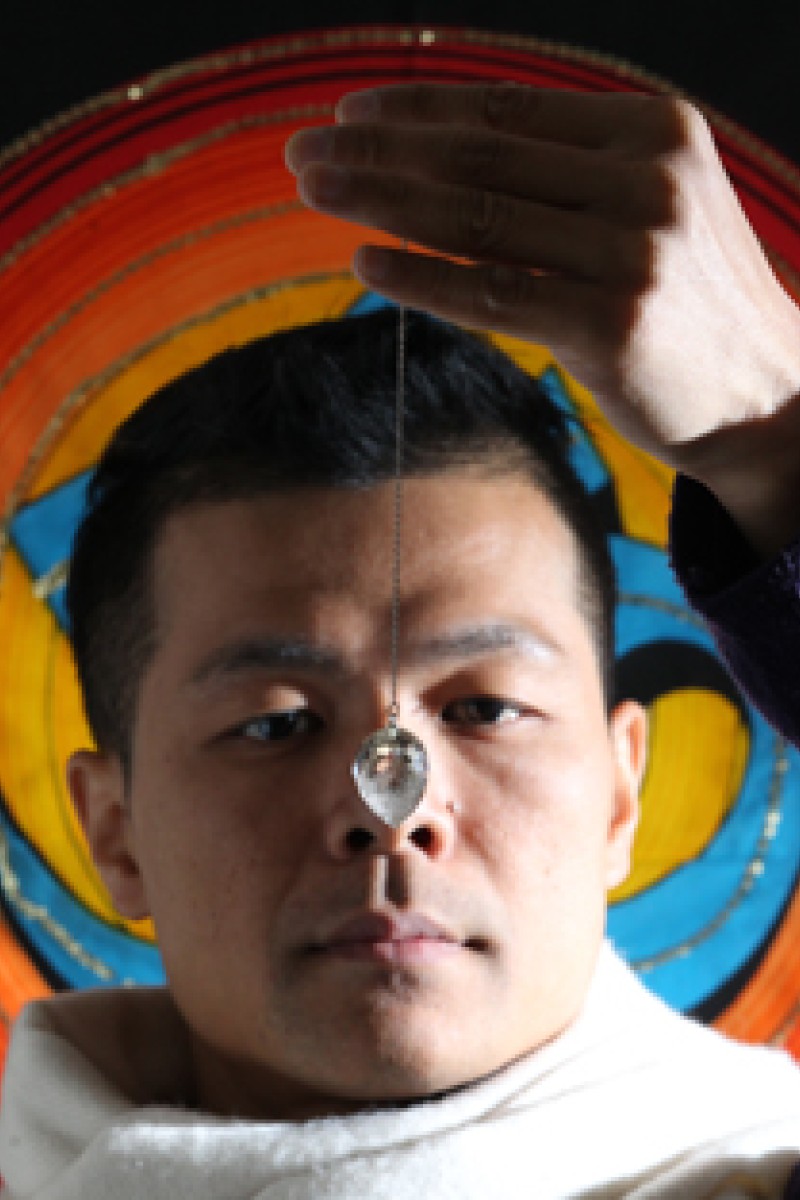 Tsang Man-tung holds a pendulum for dowsing.
Tsang Man-tung holds a pendulum for dowsing.His hand is still. I ask my question. The gemstone slowly begins to swing its pointed end towards the words "learn to feel".
"This is what you lack," Tsang, a dowser, tells me. "You can't fully appreciate every experience, environment or object until you awaken all your senses."
Dowsing has long been popular. Its practitioners believe in it; scientists dismiss it as nonsense.
Tsang, who runs the Allpamama Healing Circle in Lam Tsuen and goes by the spiritual name Sol Manzana, has been dowsing for 20 years. He insists that dowsing is "a positive way to connect with your soul and nature". The practice, he says, helps improve your intuition and check your body's energy flow.
Dowsing has a long history. Its roots can be traced back to Africa some 6,000 to 8,000 years ago. People have used a forked twig, a pendulum, or a wire rod to locate ground water, buried minerals and high-energy points. They say the dowsing rod could even tell them how deep to dig.
Now that we have running water, dowsers have branched out into trying to find answers related to spirituality or wellbeing. Tsang helps his students solve questions like: What kind of food does your body need today? How do you take care of yourself when you feel bad? What are your fears and where did they originate?
Believers claim dowsing can activate our subconscious that absorbs all sorts of information like a sponge. It is this involuntary mental activity that causes slight muscle movements in the hands and make their pendulum swing.
"We only put 5 per cent of our subconscious to use in our daily lives," Tsang says. "In the remaining 95 per cent, you have an answer to every question. [Dowsing] is the visual clue."
We might even know what the passenger behind us on a bus has inside her bag, or what lies hidden beneath our feet.
Or else it's that we can detect small amounts of electromagnetic energy. Biologists have found non-visual sensing organs in animals from turtles to birds. "It might not be surprising if humans, too, possessed extrasensory perception," Tsang says.
Many scientists insist dowsing is just a hoax. Experts from the US Geological Survey point out that America is so rich in underground water that you will find some anywhere if you drill deep enough. A famous sceptic and stage magician James Randi has offered US$1 million to anyone who could prove in a scientific setting that dowsing (or any other paranormal phenomena) was real. So far no one has managed to claim the prize.
But Tsang stresses it's not all make-believe. "It absolutely worked in my case," he says.
He has even turned to his pendulum while hunting for a new flat. He has saved his withering plant by changing its position. He claims he has helped a student balance his inner energy and become a more proactive person.
Anyone can start dowsing with "a screw, bell or key", Tsang says. For best results, your mind should be at peace and without bias. He says stress, doubt, and lack of sleep could affect a dowser's accuracy.
Dowsers also word their questions carefully. Rather than probe whether you should learn horse riding, Tsang says, he would explore how suited a sport is to a person.
And questions about relationships and privacy are no-nos.
